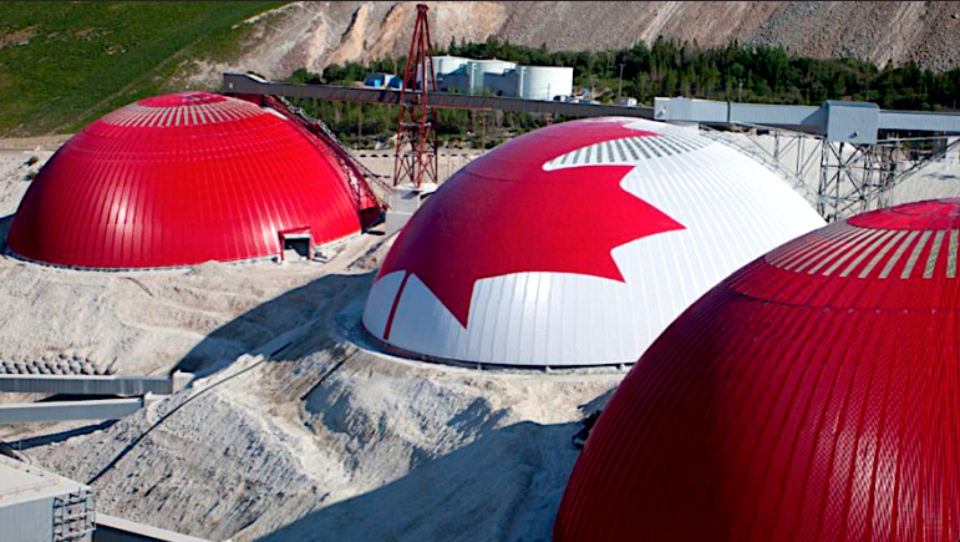Glencore (LSE: GLEN) faces an uphill battle to buy Teck Resources (TSX: TECK.A/TECK.B; NYSE: TECK) because of Canadian nationalism despite surging mergers and acquisitions in the critical minerals space.
The mining industry’s M&A activity is up 283% to US$66 billion so far this year compared with the same period last year while dealmaking across all industries is down 38% to US$1.2 trillion, according to Bloomberg data presented on Wednesday at the Society for Mining, Metallurgy & Exploration’s eighth annual Trends in Mining Finance Conference in New York.
The sector is led by Glencore’s US$27.1-billion bid last month for Teck and Newmont’s (NYSE: NEM, TSX: NGT) US$20.1 billion offer in February for Newcrest Mining (TSX: NCM; ASX: NCM). The values, reflecting updated Bloomberg data compared with previously reported amounts, help nearly quadruple the value of M&A activity among miners year-to-date versus the same period in 2022 as companies seek gold near record prices and battery metals for the green energy transition. Action in the diversified mining sub-sector that includes Teck is up 700%.
However, London-based Glencore’s proposed acquisition — rejected so far by Teck — faces tough scrutiny in Canada. The country would suffer a ding to national pride by losing one of its last large international mining companies. Federal authorities last year introduced tough new guidelines in the name of national security for investments in virtually all mining except iron.
“We can’t comment on this particular transaction just because of our professional responsibilities, but we can say that it’s clear from the rhetoric around this transaction in Canada that there’s intense political scrutiny attached to it,” Steven McKoen, a partner with law firm Blake, Cassels & Graydon, which is doing work for Teck, told the conference.
The session heard that other trends in M&A activity include earlier investments by majors doing longer due diligence on projects, automakers such as GM with its US$650-million investment in Lithium Americas (TSX: LAC; NYSE: LAC) and Tesla shoring up battery metal supplies, the growth of deals based on environmental, social and governance standards, and more private equity and pension funds involved who’ll need mining expertise.
Timing for Teck
Panelist George Karafotias, a partner in the M&A unit of law firm Shearman & Sterling in New York, said Glencore timed its approach to land before Teck was able to separate its metallurgical coal and metals businesses so it could try to buy the whole company for less than the sum of its parts. Teck needs to soundly execute its plan to simplify the division of its assets, Karafotias said.
“If all we see is a revised separation post, it’s going to be difficult to convince shareholders there is additional value,” he said. “They need to put more on the table.”
A confidential bid this week for Teck’s metallurgical coal assets by a Canadian group led by Pierre Lassonde, a founder of Franco-Nevada (TSX: FNV; NYSE: FNV) and a former president of Newmont, has added a new dimension to Glencore’s pursuit, Karafotias said. But the panel agreed a main player will be regulators after Canada boosted its critical minerals policy and stiffened its foreign investment regulations last year.
“The thing that you have to recognize with respect to the Canadian critical minerals policy, it is a substantial expansion of the review authority of the Industry ministry to look at mining transactions,” McKoen said. “When you start flipping through all the minerals that are on there, it starts to become a question of what’s not on there.”
Previously, federal review only kicked in for deals greater than $1.9 billion or down to $512 million depending on the foreign entity’s World Trade Organization status and treaty relationship with Canada, he said.
“For a lot of acquisitions in the exploration mining space, they would fall below those thresholds,” he said. “Now with the critical minerals list, we have an issue, and that is they’ve said everything on that list, if it has a foreign acquisition component, then it’s subject to a nebulous review of some sort.”
Divestments
In November, Canada ordered three Chinese companies to divest holdings from Canadian companies even though one’s main project is in Chile and others concerned non-controlling stakes. However, before the new strategy was adopted in October, China’s Zijin Mining was allowed to buy Canada’s Neo Lithium, which has a project in Argentina. Now, a subsidiary of China’s Sinomine, which owns the Tanco lithium and tantalum mine in Manitoba, wants to build a $170-million concentrator.
“Is that going to be allowed? I don’t know. I have no idea which way they’re going to jump,” McKoen said. “Having state-owned enterprises in your capital pool for your company has just generated in Canada a significant price that did not exist prior.
“The phone calls with these national security bodies are bizarre,” he said. “They don’t do Zoom calls because they don’t want you to know anybody on there. You hear all these numbers dial in they don’t say who they are. They sit there silently and then someone from Industry Canada asks you questions.”
Industry majors increased their participation in equity offerings by 50% and takeovers of juniors by 180% in 2021 compared to the previous year’s M&A activity, said John Wilkin, a partner with law firm Blake, Cassels & Graydon. GM’s investment in Lithium Americas brings a new dynamic to the industry because it’s focused on securing supply, completely different from other investors who might want a future sale of the company, he said.
“In the last couple of years, we’ve seen a lot of activity by the majors investing in junior stories, so earn-ins, joint ventures and small acquisitions and strategic investments are back,” Wilkin said. “We’re seeing Tesla and many others moving to a different point in the risk profile of a project and looking at doing streaming transactions as well.”



